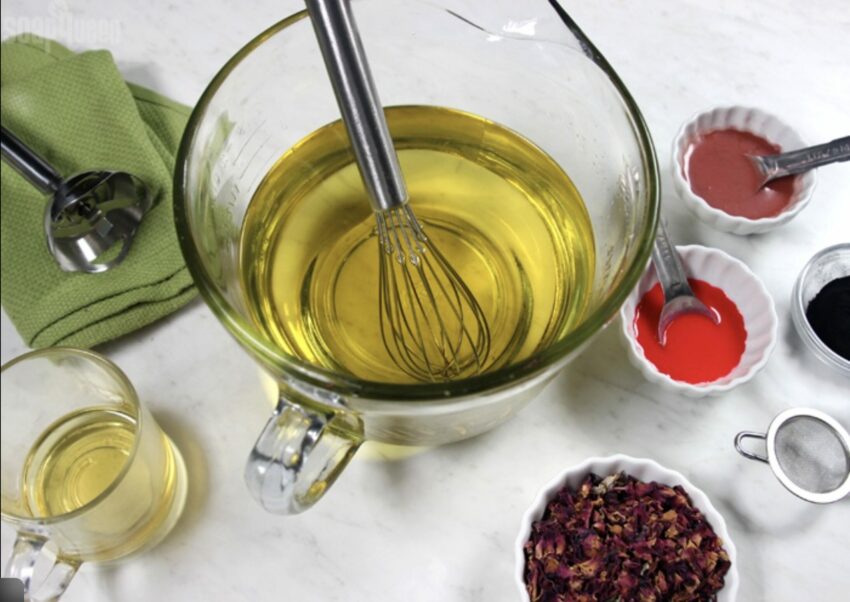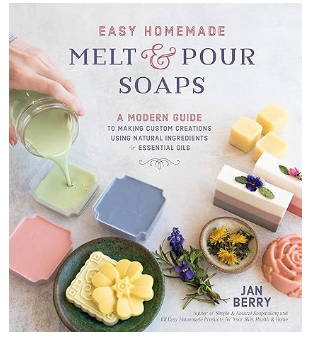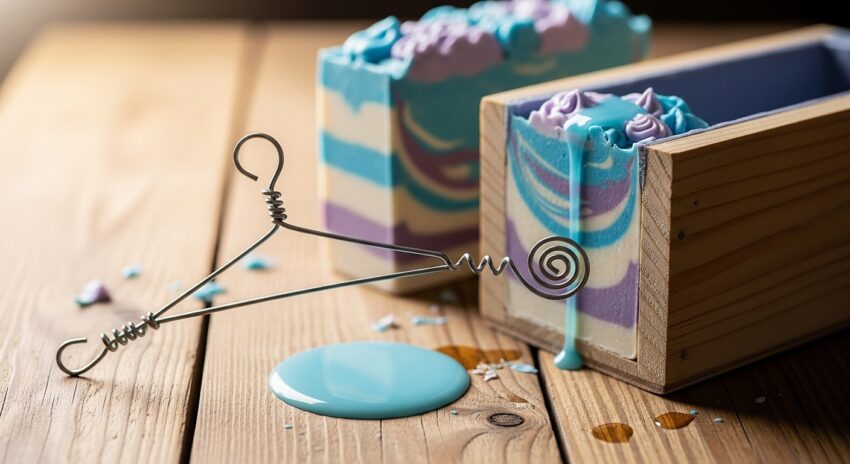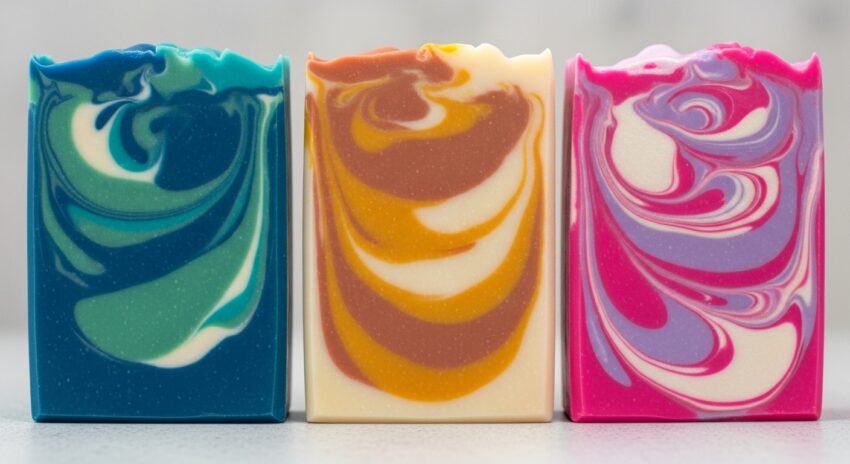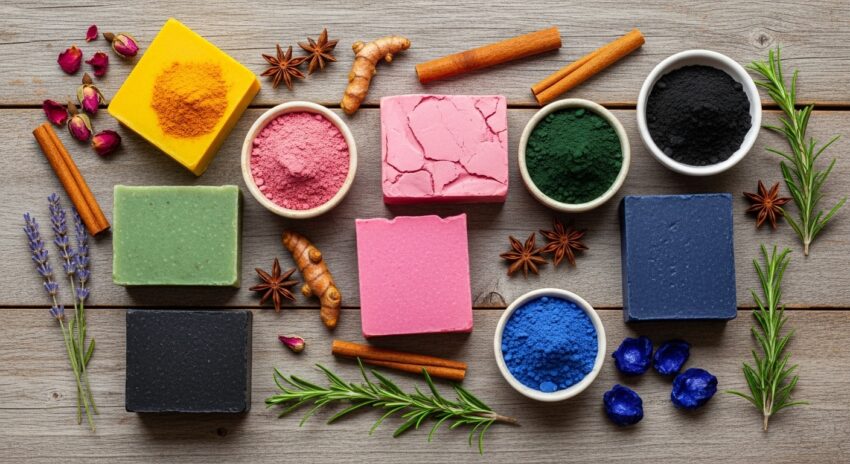A beginner-friendly guide to accurate, confident cold process soap making Using a soap lye calculator is one of the most important safety steps in soap making. Whether you’re brand new or refining your recipes, a lye calculator ensures the correct amount of sodium hydroxide (NaOH) is used so your soap is safe, balanced, and skin-friendly….
How to Make Soap Without Lye (What “Lye-Free Soap” Really Means)
Many beginners search for how to make soap without lye because working with sodium hydroxide can feel intimidating. While that concern is completely understandable, there’s an important truth to understand upfront: 👉 There is no such thing as true soap without lye. At some point in the soap-making process, lye is always used to create…
🧼 Layered Swirl Technique for Cold Process Soap
Layered Swirl: Adding Dimension to Cold Process Soap If you love artistic soaps that show off both color and texture, the Layered Swirl technique is a must-try. This design combines clean, defined layers with fluid swirls — giving each bar depth, contrast, and a truly handcrafted feel. Whether you’re going for bold color bands or…
🧼 Chopstick Or Skewer Swirl: Elegant Lines In Cold Process Soap
Introduction The chopstick or skewer swirl technique is one of the simplest yet most striking ways to add artistic flair to your cold process soap. It’s ideal for beginners and seasoned soap makers alike—requiring just a thin tool, a steady hand, and a little imagination. This method lets you draw graceful lines, curves, or intricate…
🧼 How-To: Hanger Swirl Color Your Cold Process Soap
Introduction If you’ve ever wanted to create mesmerizing patterns that flow through your soap like ribbons of color, the hanger swirl technique is a must-try. This intermediate-level swirl gives handmade soaps a professional, marbled appearance that looks complex but is surprisingly achievable once you understand the timing and motion. Whether you’re experimenting with vibrant micas…
🧼 Cold Process Lime Drop Soap Recipe
Fragrance Profile A zesty blend of fresh lime essential oil with soft notes of lemongrass and a touch of vanilla. The scent is lively and invigorating without being overpowering. Ingredients (for a 2 lb / 900 g oil batch) Base Oils: Olive Oil – 12 oz (340 g) Coconut Oil (76°F) – 8 oz (227…
🧼 Drop Swirling For Cold Process Soap: Create Stunning Designs With Ease
✨ What Is Drop Swirling? Drop swirling is one of the most captivating and beginner-friendly cold process soap techniques. It involves pouring colored soap from different heights into a base layer, allowing gravity and motion to create beautiful, natural swirl patterns inside the bar. What makes it special is its unpredictability—every bar looks unique, with…
🧼 How To Create Stunning In-the-Pot Swirls In Cold Process Soap
Why In-the-Pot Swirling Makes Cold Process Soap Magical In-the-pot swirling (ITP) is one of the most popular cold process soap designs because it’s elegant, versatile, and beginner-friendly. Each swirl captures movement and color in a way no two bars ever replicate. The technique looks intricate but relies on timing, temperature, and a steady hand—not professional…
How to Make Beautiful Swirl Patterns in Cold Process Soap: A Step-by-Step Guide
If you love handmade body care, you probably know that cold process soap is where art and chemistry come together. Swirl patterns in natural soaps bring a personal touch to every single bar, and the best part is you can make eye-catching designs even if you’re brand new. This guide shares my favorite tips, techniques,…
Using Natural Colors In Soap Making
Natural Soap Colorants: Beautiful Botanical & Clay Colors for Soap Natural colors can completely transform homemade soap. Whether I’m crafting a batch for myself or as gifts, I love using hues pulled right from nature. Not only do they look gorgeous, but they also add a wholesome touch that feels really special. If you’re new…
